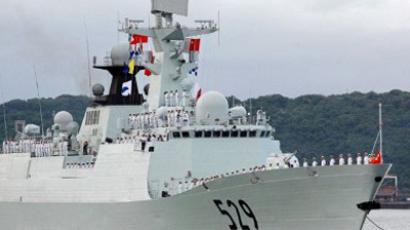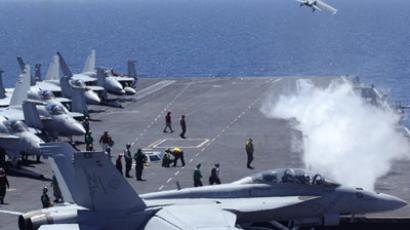US military plan against China outlined in think-tank report

As analysts around the world question whether the US is losing its superpower status, China’s influence in the Asia-Pacific region is strengthening. But a new report has set out a strategy for America to increase its military presence in the area.
The paper, entitled “US Force Posture Strategy in the Asia-Pacific Region: An Independent Assessment,” suggests America is preparing for a possible conflict with China, one warship at a time.The report was written by the Centre for Strategic and Independent Studies (CSIS), a Washington-based think tank. CSIS is a non-government body, but its assessment was commissioned by the US Defense Department.The assessment provides extensive discussions with top US military personnel throughout the Pentagon’s Pacific Command.The report was released on June 27, but only gained media coverage after its main authors – David Berteau and Michael Green – testified before the US House Armed Services Committee on August 1.The report says the “geostrategic uncertainty the United States and its allies and partners face in the Asia Pacific region is how China’s growing power and influence will impact order and stability in the years ahead.”The CSIS report approves of the repositioning and strengthening of US military forces on Guam and the Northern Mariana Islands, which are strategically located in the Western Pacific. It also supports the stationing of combat ships in Singapore, which will be capable of intelligence gathering, special operations, and landing troops with armored vehicles.The paper confirms that the US has held talks with Thailand, the Philippines, and Vietnam over possible access to military bases.But it doesn’t stop there. Recommendations to prevent China’s reemergence as a great power go on and on.The authors suggest placing a US nuclear aircraft carrier in Australia, doubling the number of nuclear attack submarines based in Guam, deploying combat ships to South Korea, and upgrading anti-missile defenses in Japan, South Korea, and Guam.The report also suggests permanently basing a bomber squadron on Guam as well as boosting both manned and unmanned surveillance in the region. Moreover, it promotes boosting US army ground presence, including stationing 2,500 more marines in Australia.The recommendations coincide with the Obama administration’s “Asia Pivot.” It’s a plan to boost US military presence throughout the Asia-Pacific Region, and to back almost all of China’s rivals whilst doing so.And the government has most certainly accomplished its goal. Just last week, the Pentagon announced it would conduct surveillance drone missiles over a Pacific island chain which have become a point of tension between China and Japan – who the US has deep military ties to.Washington has also been a firm supporter of the Philippines during its ongoing dispute with China in the South China Sea since April, when a standoff began over ownership of the Scarborough Reef.Since the disagreement kicked off, Washington has stepped up its military presence in the region. The move angered Beijing, which claims the presence of US naval ships hinders vital shipping lanes which China relies on for energy and raw materials.If America makes the report’s suggestions a reality, the decision could have far-reaching implications for Washington’s allies, making them vulnerable to attacks in the future.And if the US aims to strengthen its ties with Asia-Pacific countries in order to squash China, the question remains whether those island nations will actually comply.














